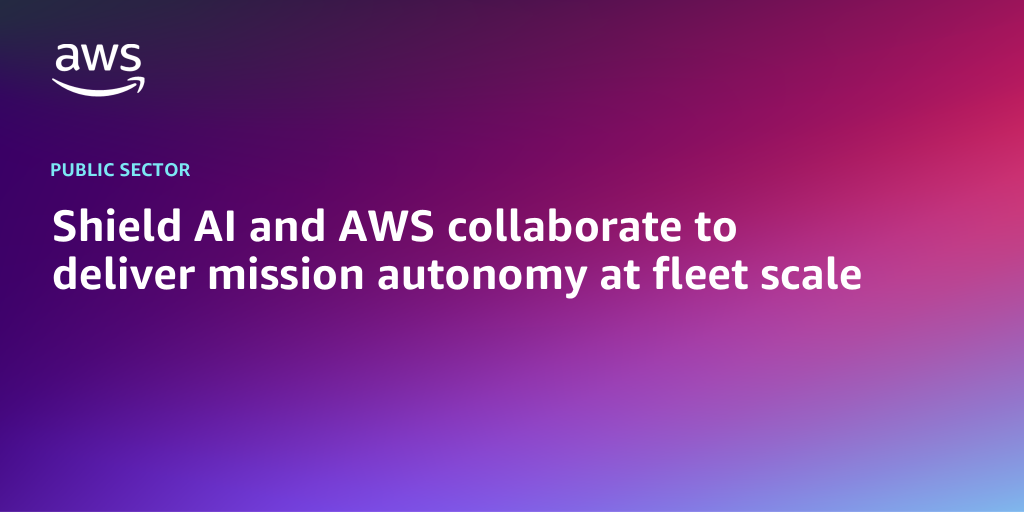AWS Public Sector Blog
Tag: Artificial Intelligence
AWS LLM League sparks AI innovation at AWS Summit Washington, DC 2025
Recently, the AWS Large Language Model (LLM) League took center stage at the AWS Summit Washington, DC 2025, captivating attendees with its hands-on approach to fine-tuning large language models (LLMs). Read this post to learn more.
No-code AI development: Using Amazon SageMaker AI and Amazon Kendra for smart search chatbots
In this post, we walk through creating a Retrieval Augmented Generation (RAG)–powered chat assistant using Amazon SageMaker AI and Amazon Kendra to query donor data on AWS.
Unlocking student success with generative AI: How Panorama Education built Solara on AWS
With over a decade of experience supporting more than 2,000 school districts across North America, Panorama Education had already built powerful tools for integrating academic, attendance, behavior, and life skills into one unified view of student progress. To unlock the value of that data securely, Panorama built Solara, a generative AI platform built on AWS. Solara is designed to help educators make sense of student data faster, design personalized student improvement plans, and reduce administrative burden while maintaining trust and data privacy at scale.
Shield AI and AWS collaborate to deliver mission autonomy at fleet scale
This significant growth in military unmanned aerial vehicles, which serve as a proxy for the broader autonomous systems market, underscores the urgent need for scalable, secure, and efficient software deployment solutions. As the number of autonomous platforms increases, so does the complexity of managing their software systems. In response to this growing challenge, Shield AI and AWS have collaborated and successfully demonstrated a scalable architecture and proof of concept (PoC) that addresses challenges often seen when deploying autonomy software and machine learning algorithms onto autonomous systems.
Planning for failure: How to make generative AI workloads more resilient
As more and more public sector organizations deploy generative AI workloads, we are increasingly asked what can be done to make sure that these workloads are resilient to failures. In this post, we discuss the key factors that mission-based organizations should consider so that their generative AI workloads are resilient to failures.
Indiana University streamlines social science research with secure automated transcription on AWS
To help researchers reclaim their time and focus on discovery, Indiana University developed a secure, scalable, and cost-effective Automated Transcription Service (ATS) built on AWS. Since launching, the service has supported nearly 60 projects across 16 departments and has become a model for how universities can use cloud-native tools to affordably streamline research workflows and protect sensitive data.
From local servers to global impact: How Learning Upgrade uses AWS to reach millions of learners in need
Learning Upgrade worked with AWS to modernize its platform and ultimately migrated fully to the cloud. This strategic shift empowered Learning Upgrade to scale globally, respond faster to new opportunities, and better serve learners in dynamic, resource-constrained environments. Read this post to learn more.
Empowering the public sector with Amazon Q Business: Best practices for security, efficiency, and scalability
By using generative AI, government agencies can analyze large amounts of data to identify patterns and insights, streamline manual processes, and deliver faster, personalized, more accessible services to citizens while maintaining the highest standards of accuracy and compliance. Read this post to learn more.
The future of financial regulation: How technology makes finance safer
Read this post to learn about a new white paper produced by Alliance for Innovative Regulation (AIR), and supported by AWS, which offers guidance that supervisory authorities can use to implement Supervisory Technology (SupTech).
New AWS WickrGov offerings to enable secure, compliant communication on multiple devices
Today, Amazon Web Services (AWS) is announcing two new AWS WickrGov offerings designed to help customers rapidly deploy secure communications capabilities across their organizations.









